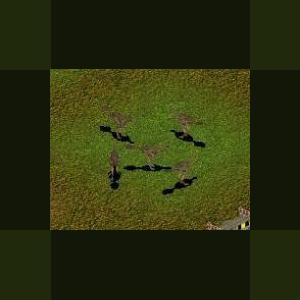About This File
Beipiaosaurus is a genus of therizinosauroid theropod dinosaur.
The discovery of Beipiaosaurus , which translates as "Beipiao lizard" after a city in China near the location of its discovery, was announced in the May 27, 1999, issue of the journal Nature. These fossils were found in Liaoning Province, China and have been dated to the early Cretaceous Period, about 125 million years ago. It is known from a single species, B. inexpectus, named for "the surprising features in this animal.". A significant number of fossilized bones for this species were recovered, including: cranial fragments, a mandible, three cervical vertebrae, four dorsal vertebrae, a caudal vertebra, the scapula and scapulacoracoid, a complete forelimb, and a complete pelvis with hindlimb.
The exact classification of therizinosaurs had in the past been hotly debated, since their prosauropod-like teeth and body structure indicate that they were generally herbivorous, unlike typical theropods. Beipiaosaurus, being considered to be a primitive therizinosauroid, has features which suggest that all therizinosauroids, including the more derived Therizinosauridae, to be coelurosaurian theropods, not sauropodomorph or ornithischian relatives as once believed.
Beipiaosaurus measured 2.2 meters (7.3 ft) in length and .88 meters (2.9 ft.) tall at the hip, and is among the largest known feathered dinosaurs. Its weight is estimated as about 85 kg (187 lb.) Beipiaosaurus had a toothless beak with cheek teeth. More advanced therizinosaurids have four functional toes, but the feet of Beipiaosaurus' have reduced inner toes, showing that the derived therizinosaurid condition may have evolved from a three-toed therizinosauroid ancestor. The head was large relative to other therizinosaurs, and it had some features similar to the related oviraptorosaurs. The fossil's skin impressions indicate its body was covered by downy feather-like fibers, which are similar to those of Sinosauropteryx, but longer, and are oriented perpendicular to the arm. Xu et al. suggest that the feathers of Beipiaosaurus represent an intermediate stage between Sinosauropteryx and more advanced birds (Avialae). As only theropod dinosaurs are so far known to have been feathered, this discovery is further evidence that therizinosaurs were indeed theropods.



Recommended Comments
There are no comments to display.
Create an account or sign in to comment
You need to be a member in order to leave a comment
Create an account
Sign up for a new account in our community. It's easy!
Register a new accountSign in
Already have an account? Sign in here.
Sign In Now